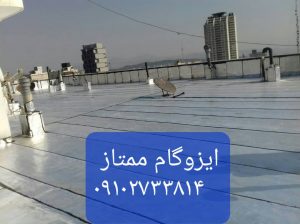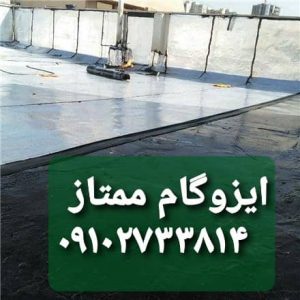
بسم الله الرحمن الرحیم
قیر و انواع آن
مادهای است گرانبها دارای خاصیت چسبندگی به رنگ مشکی و جامد یا خمیری که در ایزولاسیون بخصوص ساخت ایزوگام و آسفالت کاربرد فراوان دارد. عمده اجزای سازنده آنها هیدروکربنهای با وزن مولکولی بالا تشکیل میدهند همچنین قیر زیر شاخههای گوناگونی دارد که هر یک از آنها، دارای کاربرد خاصی است. قیر از اجزای تشکیل دهنده نفت است و اغلب در پالایشگاه استخراج نفت تولید میشود.
انواع قیر
قیرهای استخراج شده از نفت یا سنگهای معدنی مخصوص، قیر خالص نام دارد که با توجه به نحوه تشکیل، طبقهبندی میشود. قیرهای خالص همچنین برای اینکه خواص مورد نظر برای موارد گوناگون را پیدا کنند، تحت فرآیندهای صنعتی دیگر قرار میگیرند و انواع مختلف قیر را به لحاظ مرغوبیت جنس آنها به ترتیب زیر طبقه بندی میکنیم. ایزوگام در تهران، ایزوگام در کرج، ایزوگام در کلاک، ایزوگام در محمد شهر، ایزوگام در آتشگاه.
به دلیل اهمیت ابتدا قیرهای پالایشگاهی را تعریف میکنیم.
قیر نفتی
قیرنفتی یا نرم معمولاً از برج تقطیر در خلاء پالایشگاه یا مختصری مورد فرایند هوادهی قرار گرفته است به دست میآید. چنین قیری قیر نفتی یا نرم نامیده میشود و عمده دلیل نامگذاری آنها براساس بازه ای است که درجه نفوذ پذیری قیرها بین آن قرار میگیرد. مانند قیر ۶۰/۷۰ قیری که درجه نفوذ پذیری آن بین ۶۰ تا ۷۰ دهم میلیمتر قرار دارد. درکل قیر نفتی محصول دو مرحله تقطیر نفت خام در برج تقطیر است.
در مرحله نخست تقطیر، مواد سبک مانند بنزین و پروپان طی مراحل پیچیده صنعتی از نفت خام جدا میشوند. این فرآیند در فشاری نزدیک به یک اتمسفر (واحد) انجام میشود. در مرحله دوم نیز ترکیبات سنگین مانند گازوئیل و نفت سفید نیز از نفت خام خارج میشوند. این فرآیند در فشاری نزدیک به خلاء صورت میپذیرد. در آخرمخلوطی از گرد جامد بسیار ریز به نام آسفالتن باقی میماند که در ماده سیال گریسمانندی به نام مالتن غوطهور میشود که در کارخانههای تولید ایزوگام بیشترین استفاده را دارد.
قیر طبیعی
اما برخی دیگر از انواع قیرها در دامن طبیعت و در اثر تبدیل شدن تدریجی نفت خام و تبخیر مواد فرار آن در اثر گذشت سالیان بسیار زیاد به دست میآید. چنین قیری، قیر طبیعی نامیده میشود و دوام آن بیشتر از قیرهای نفتی است. چنین قیری ممکن است بهصورت خالص در طبیعت وجود داشته باشد (قیر دریاچهای) مانند دریاچه قیر بهبهان ایران و یا از معادن استخراج شود (قیر معدنی)
قیر دمیده
قیری است که در دمای معمولی به حالت جامد است و از دمیدن هوای داغ کوره به قیر خالص در مرحله آخر عمل تصفیه به دست میآید. مواد قیرها به دلیل دمیدن هوا پلیمر شده و خاصیت الاستیکی پیدا میکنند به آنها قیر دمیده گویند در این فرآیند، هوای داغ با دمای ۲۰۰ تا ۴۰۰ درجه سانتیگراد توسط لولههای سوراخدار که به کوره وصل است به محفظه حاوی قیر دمیده میشود.
در اثر انجام این فرآیند، اتمهای هیدروژن موجود در مولکولهای هیدروکربورهای قیر، با اکسیژن هوا ترکیب میشود و با تشکیل آب، عمل بسپارش اتفاق میافتد. قیر دمیده نسبت به قیر خالص دارای درجه نفوذ کمتری است، درجه نرمی بیشتری دارد و حساسیت کم تری نسبت به تغییرات دما دارد. این نوع قیر بیشتر در ساختن ورقهای پوشش بام، باتری اتومبیل و اندودکاری مورد استفاده قرار میگیرد. علامت اختصاری قیر دمیده R میباشد. مثلا قیر۸۰/۲۵ R به معنای قیر دمیده با درجه نرمی ۸۰ و درجه نفوذ ۲۵ میباشد.
قیر مخلوط یا محلول
قیر مخلوط به مخلوطی از قیر و یک ماده دیگر (مثلاً نفت سفید یا بنزین) گفته میشود. که نفت سفید در حکم حلال در این رابطه میباشد این قیر در درجه حرارت محیط نیمه مایع است و یا با حرارت ۶۰۰درجه ای به مایع تبدیل میشود تا قابل مصرف شود البته ذکر این نکته نیز که حرارت زیاد در این نوع قیر به آن آسیب میزند الزامی میباشد قیر مخلوط در انواع آسفالتهای پوششی خیابانی مورد استفاده قرار میگیرد. سرعت سرد شدن یا سفت شدن این نوع قیر بستگی به نوع محلول دارد. بهطور مثال به دلیل سرعت بالای پرش بنزین، قیر حل شده در بنزین سریعتر سفت میشود. این قیر، اصطلاحا قیر تندگیر نامیده میشود. همچنین قیرهایی که در نفت حل شدهاند، قیر کندگیر نامیده میشوند و به قیرهایی که در نفت گاز یا نفت کوره حل شوند به دلیل سرعت پایین پرش آن ، نفت دیرگیر گفته میشود.
قیر امولسیون
قیر امولسیون با مخلوط کردن قیر و مقدار کمی آب و یک ماده امولسیونی(مانندنمک آمونیم) بهدست میآید. مقدار ماده امولسیون ساز بسیار کم و در حدود ۰٫۳ تا ۰٫۵ درصد کل وزن قیر میباشد. مقدار آب مصرفی این نوع قیر در حدود ۲۰ تا ۵۰ درصد کل وزن قیر میباشد. ماده امولسیونساز معمولاً یک نمک قلیایی یا نمک آمونیم است که باعث باردار شدن ذرات قیر میشود.
به این ترتیب ذرات قیر در اثر تراکنش یکدیگر را دفع میکنند و بهصورت کرههایی با قطر یکصدم تا یکهزارم میلیمتر در سطح آب شناور میشوند. استفاده از این نوع قیر، باعث کاهش آلایندگی زیست محیطی میشود و چون از نفت یا حلالهای شیمیایی قابل اشتعال استفاده نمیشود، خطر اشتعال در حین مصرف و حمل قیر کاهش مییابد. از قیر امولسیونی برای آسفالت سرد در محیطهای مرطوب یا برای عایق کاری استفاده میشود که در این صورت باید دوباره به آن آب اضافه کرد و محتوای آن را به حدود ۶۰ درصد رساند.
راه های ارتباطی شرکت ایزوگام ممتاز
شماره شرکت جهت مشاوره و نصب:
۰۹۱۰۲۷۳۳۸۱۴
آدرس ایمیل شرکت :
isogamomtaz@gmail.com
آدرس شرکت :
تهران، میدان ولیعصر، ولیعصر پنجم، پلاک ۱۳

In the name of God
Bitumen and its types
It is a precious material with the property of sticking to black and solid color or paste, which is widely used in insulation, especially in the manufacture of isogum and asphalt. Their main components are high molecular weight hydrocarbons. Bitumen also has various sub-branches, each of which has a specific application. Bitumen is a component of oil and is often produced in oil refineries.
Types of bitumen
Bitumen extracted from oil or special minerals is called pure bitumen, which is classified according to its formation. Pure bitumens are also subjected to other industrial processes in order to find the desired properties for different purposes, and we classify different types of bitumens in terms of their quality in the following order.
Because of their importance, we first define refinery bitumen.
Petroleum bitumen
Petroleum or soft bitumen is usually obtained from a distillation tower in a refinery vacuum or briefly aerated. Such bitumen is called petroleum or soft bitumen and the main reason for naming them is based on the interval between which the degree of permeability of the bitumen is placed. Like 60/70 bitumen, the permeability of which is between 60 and 70 tenths of a millimeter.
In general, petroleum bitumen is the product of two stages of crude oil distillation in the distillation tower. In the first stage of distillation, light materials such as gasoline and propane are separated from crude oil during complex industrial stages. This process takes place at a pressure close to one atmosphere (units). In the second stage, heavy compounds such as diesel and kerosene are also extracted from crude oil. This process takes place at a pressure close to vacuum. Finally, a mixture of very fine solid powder called asphaltene remains, which is immersed in a grease-like fluid called malton, which is most commonly used in isogum factories.
Bitumen
But some other types of bitumen are obtained in the skirts of nature due to the gradual conversion of crude oil and the evaporation of its volatiles over the years. Such bitumen is called natural bitumen and it is more durable than oil bitumens. Such bitumen may exist in pure form in nature (lake bitumen) such as Behbahan bitumen lake in Iran or extracted from mines (mineral bitumen)
Bitumen blown
It is a bitumen that is solid at normal temperature and is obtained by blowing hot air from the furnace into pure bitumen in the last stage of the purification process. The materials of bitumen are polymerized due to blowing air and have elastic properties. They are called blown bitumen. In this process, hot air at a temperature of 200 to 400 ° C is blown into the bitumen chamber by perforated pipes connected to the furnace. As a result of this process, the hydrogen atoms in the molecules of bitumen hydrocarbons combine with the oxygen in the air, and by the formation of water, the action of polymerization takes place. Blowed bitumen has a lower degree of penetration than pure bitumen, has a higher degree of softness and is less sensitive to temperature changes. This type of bitumen is mostly used in making roofing sheets, car batteries and plastering. The abbreviation for blown bitumen is R. For example, bitumen 80/25 R means blown bitumen with a degree of softness of 80 and a degree of penetration of 25.
Mixed or dissolved bitumen
Mixed bitumen is a mixture of bitumen and another substance (eg kerosene or gasoline). That kerosene is considered a solvent in this regard. This bitumen is at a semi-liquid ambient temperature or turns into a liquid with a temperature of 600 degrees to be consumed. Mixed bitumen is required to be used in all types of street paving asphalts. The rate of cooling or hardening of this type of bitumen depends on the type of solution. For example, due to the high jump speed of gasoline, the bitumen dissolved in gasoline hardens faster. This bitumen is called hard bitumen. Bitumens that dissolve in oil are also called retarder bitumen, and bitumens that dissolve in gas oil or furnace oil are called retarder oil because of their slow jumping speed.
Emulsion bitumen
Emulsion bitumen is obtained by mixing bitumen with a small amount of water and an emulsion (such as ammonium salt). The amount of emulsion is very small and is about 0.3 to 0.5% of the total weight of the bitumen. amount of water consumed by this type is about 20 to 50% of the total weight. The emulsifier is usually an alkaline salt or ammonium salt that causes bitumen particles to become charged. In this way, the bitumen particles repel each other as a result of the transaction and float in the form of spheres with a diameter of one hundredth to one thousandth of a millimeter in the surface of the water. The use of this type of bitumen reduces environmental pollution, and because no flammable petroleum or chemical solvents are used, the risk of ignition during consumption and transportation of bitumen is reduced. Emulsion bitumen is used for cold asphalt in wet environments or for insulation, in which case water must be added again and its content must be reduced to about 60%.
Ways of communication with the top isogam
Comapany Contact number
09102733814
Email address:isogamomtaz@gmail.com
Company address:Tehran_Valiasr square valiasr no.1